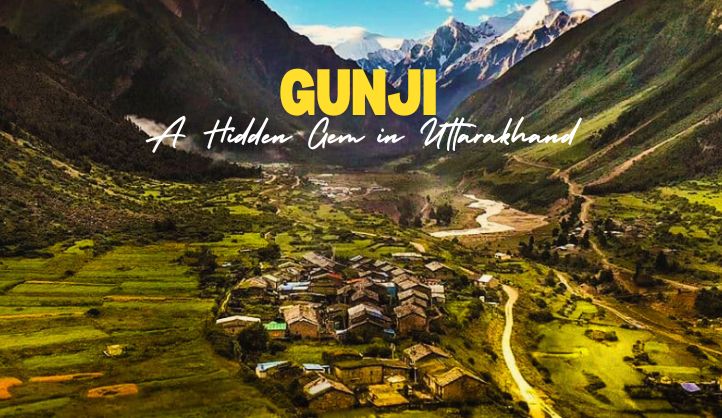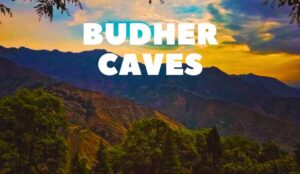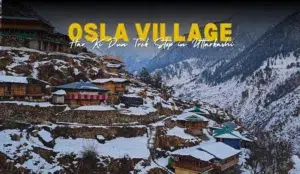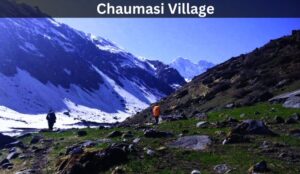Nestled in the scenic beauty of Uttarakhand, Gunji is a quaint village located near the Indo-Nepal border in the Pithoragarh district. This village, hidden in the folds of the majestic Himalayas, offers a unique blend of natural beauty, cultural significance, and adventure. Gunji may not be as well-known as other tourist destinations in Uttarakhand, but it has its own charm that draws travelers seeking off-the-beaten-path experiences. Let’s dive into what makes this place special and why you should consider adding it to your travel list.
The Scenic Beauty of Gunji
One of the main reasons people visit Gunji is its breathtaking landscapes. At an altitude of about 3,220 meters above sea level, the village is surrounded by snow-capped mountains, lush green meadows, and sparkling rivers. The stunning views of the peaks and the serene environment make it a paradise for nature lovers and photographers alike.
Gunji lies on the famous Kailash Mansarovar Yatra route, a pilgrimage that attracts thousands of devotees every year. The region offers picturesque landscapes that remain etched in the memory of travelers, with the mighty Himalayas as a constant backdrop. The quiet and peaceful surroundings, untouched by modernity, provide a retreat from the hustle and bustle of city life.
A Spiritual Stop on the Kailash Mansarovar Yatra
This place is an important stop for pilgrims heading towards Mount Kailash and Lake Mansarovar in Tibet. The Kailash Mansarovar Yatra is a revered pilgrimage for Hindus, Jains, and Buddhists, as Mount Kailash is considered the abode of Lord Shiva. Lake Mansarovar, located near Mount Kailash, is believed to be one of the holiest lakes in the world.
During the pilgrimage, Gunji serves as a base camp where pilgrims can rest, acclimatize to the altitude, and prepare for the strenuous journey ahead. The peaceful ambiance of the village, coupled with its religious significance, makes it a meaningful stop for devotees and travelers alike.
Gateway to the Indian and Nepalese Himalayas
Gunji’s location near the border of India and Nepal makes it a unique place to explore. The village is situated close to the Lipulekh Pass, which acts as a gateway to Tibet. This pass has historical and cultural significance, as it has been a trade route between India and Tibet for centuries.
This strategic position allows visitors to experience the diverse cultures of India and Nepal while witnessing the close interactions between the two nations. Due to its proximity to the border, this place is also a key location for the Indian Army and the Indo-Tibetan Border Police (ITBP), who guard the sensitive border areas. The presence of military personnel adds a sense of security, and travelers may even get a chance to learn about their experiences in this rugged, remote part of the world.
Rich Biodiversity and Wildlife
Gunji and the surrounding areas are blessed with a rich variety of flora and fauna. Due to its high altitude and alpine terrain, the region is home to several unique species of plants, animals, and birds. Wildlife enthusiasts may spot animals like the Himalayan ibex, snow leopards, musk deer, and various species of pheasants.
For bird watchers, Gunji offers an exciting opportunity to observe rare and migratory birds that are attracted to the region’s diverse habitats. The pristine environment and minimal human interference have helped maintain the natural balance, allowing the wildlife to flourish.
Trekking and Adventure Opportunities
Adventure seekers will find plenty to do in Gunji. The region offers numerous trekking trails that take you through beautiful landscapes, dense forests, and picturesque valleys. One of the most popular treks is the trek to Adi Kailash, also known as Chota Kailash, which is a smaller counterpart of the more famous Mount Kailash. Adi Kailash is considered a sacred site and provides trekkers with a similar experience to the Kailash Mansarovar Yatra, but with slightly less intensity.
The trek to Adi Kailash starts from Gunji and passes through stunning landscapes, including the mesmerizing Vyas Valley. The route offers trekkers a chance to experience local culture, interact with the villagers, and enjoy breathtaking views of the snow-clad peaks. Another popular trek from Gunji is the trek to Om Parvat, a mountain considered sacred by Hindus due to its naturally occurring “Om” symbol on its surface. This trek, though challenging, rewards trekkers with a unique spiritual experience and panoramic views of the surrounding ranges.
Local Culture and Lifestyle
The people of this place are warm, hospitable, and deeply rooted in their cultural traditions. The village is primarily inhabited by the Bhotiya tribe, who are known for their unique customs and lifestyle. The Bhotiya people have lived in high altitudes for generations and have adapted to the harsh climate and challenging terrain.
During your visit to this place, you can interact with the locals and learn about their traditions, customs, and daily routines. The people here are skilled in weaving and handicrafts, and you may come across beautiful woolen products and traditional garments that showcase the tribe’s craftsmanship. The village provides a rare glimpse into the life of people living in a remote Himalayan settlement, preserving their cultural heritage amidst the ever-changing world.
Best Time to Visit
The best time to visit Gunji is during the summer months, from May to September when the weather is relatively pleasant and the skies are clear. During this period, the temperatures are moderate, making it comfortable for trekking and other outdoor activities. Monsoon season, which begins in July, brings heavy rainfall and makes the trails slippery and challenging to navigate. winter months, from November to March, are extremely cold, with temperatures dropping significantly and heavy snowfall blocking the roads, making it difficult to access the village.
How to Reach
Reaching Gunji is an adventure in itself due to its remote location. The nearest major town is Dharchula, from where you can begin your journey to Gunji. Dharchula is well-connected by road and can be reached via a long drive from Delhi or other nearby cities.
From Dharchula, travelers have to rely on government transport, as private vehicles are not permitted on the route. You can hire a local guide or join a trekking expedition to make your journey more manageable. The route passes through narrow mountain roads and scenic valleys, giving travelers a taste of the rugged Himalayan terrain before they reach Gunji.
Important Tips for Travelers
If you’re planning a trip to Gunji, here are a few essential tips:
- Permits: Due to its proximity to the Indo-China border, Gunji falls under a restricted area, and travelers require special permits to visit. Permits can be obtained from the Pithoragarh district authorities, but it’s advisable to apply well in advance.
- Acclimatization: The high altitude of Gunji may cause altitude sickness. It’s essential to acclimatize properly and take necessary precautions to prevent any health issues.
- Travel Light: Since the journey involves trekking and rugged paths, it’s best to travel light and carry only essentials.
- Carry Cash: There are no ATMs or banks in Gunji, so carry enough cash to cover your expenses during your stay.
Conclusion
Visiting Gunji in Uttarakhand is an experience unlike any other. The village offers a unique blend of spirituality, adventure, and natural beauty that is rare to find in today’s fast-paced world. Whether you’re a nature enthusiast, a spiritual seeker, or an adventure lover, Gunji has something special to offer. The serene landscapes, warm hospitality, and cultural richness of the village make it an unforgettable destination.
So, if you’re looking for a travel destination that combines the thrill of adventure with the peace of spirituality, Gunji is a perfect choice.
FAQs About Gunji, Uttarakhand
1. Where is Gunji located?
Gunji is a small village in the Pithoragarh district of Uttarakhand, near the Indo-Nepal border. It sits at an altitude of about 3,220 meters and lies on the route of the Kailash Mansarovar Yatra.
2. How can I reach Gunji?
To reach Gunji, first travel to Dharchula, the nearest major town. From Dharchula, you’ll need to continue via government transport or join an organized trekking group, as private vehicles are restricted.
3. Do I need a permit to visit Gunji?
Yes, because of its proximity to the Indo-China border, Gunji is in a restricted area. You must obtain a permit from Pithoragarh district authorities to visit.
4. What is the best time to visit Gunji?
The ideal time to visit Gunji is from May to September, during the summer months when the weather is clear and suitable for outdoor activities.
5. Is Gunji a good place for trekking?
Yes, Gunji offers excellent trekking opportunities. Popular treks from Gunji include routes to Adi Kailash and Om Parvat, both known for their natural beauty and spiritual significance.
6. What should I carry when visiting Gunji?
Carry essentials like warm clothing, trekking gear, sufficient cash (no ATMs are available), and altitude sickness medication if needed. Traveling light is advisable due to the rugged terrain.





